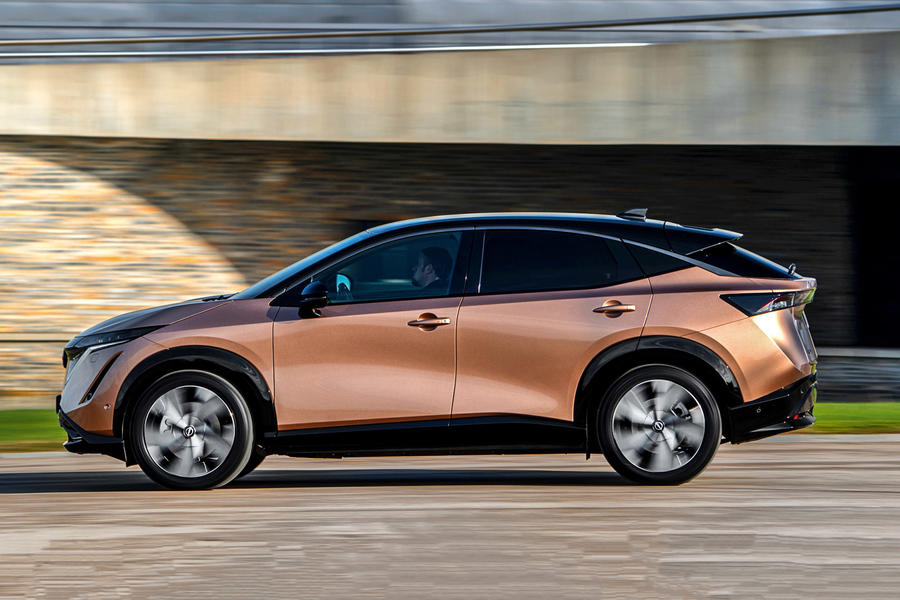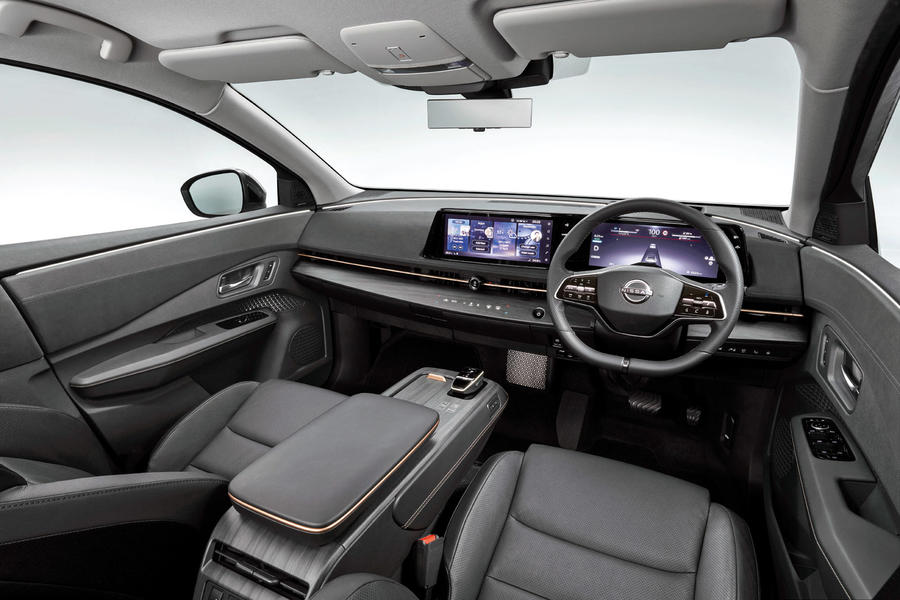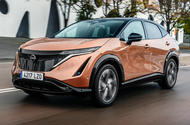Airy, comfy and characterful, Nissan’s electric SUV is very charming, but ambitious prices and so-so range could hold it back
Despite being an early EV adopter with the Leaf hatchback, it has taken Nissan a while to come up with a second EV. With the Ariya SUV, it finally has. Well, almost. The car we’re driving today is a pre-production car and our time with it was limited, but it was enough to show that the Ariya could be a very compelling entry in the class currently led by the Kia EV6 and Hyundai Ioniq 5.
Nissan’s contender for the Volkswagen ID 4 class does look like a pretty thorough job. It’s based on the brand-new CMF-EV platform that’s shared with the Renault Megane E-Tech Electric and will underpin a whole range of EVs from the two brands.
Unlike those rivals, entry-level Ariyas are front-wheel drive, with higher-power versions getting an additional rear motor. While that lay-out means that there is definitely no room for a frunk, the advantage should be a deeper boot. That said, interior space is only marginally more generous than an ID 4.
Another area where Nissan and Renault’s approach differs from the Volkswagen Group brands is in the design. Just looking at the Megane E-Tech and Nissan Ariya, it’s not obvious that they’re mechanically related. Where the Renault is more of a chunky, sporty hatchback, the Ariya is bigger and more SUV-like, but with fairly simple lines and clean surfaces.
The Ariya also comes with bigger batteries and more power than the Megane. The entry-level model we’re driving here has a 63kWh pack and a single 215bhp motor for a WLTP range of 250 miles. An upgraded 87kWh battery pack will be available too, and comes with a single 239bhp front motor, or ‘E-4orce’ dual motors with 302bhp or 388bhp. Range figures for the big battery have yet to be confirmed.
250 miles from a 63kWh battery is decent if nothing special. What isn’t so good is the maximum charging speed of 130kW. Nissan says that the charging curve is actually very flat. In other words, it will be able to maintain that maximum charging speed for longer. Even so, when Kia and Hyundai manage 230kW, 130kW is a little disappointing. A 10-80% charge of the bigger battery will take at least 40 minutes, whereas the Kia EV6 can do the same in 18.

Like in all ground-up EVs, the skateboard platform – or magic carpet as Nissan calls it – gives the Ariya a flat floor. And Nissan has made the most of it, too, creating an airy feel in the cabin. The centre console slides forwards and backwards electrically, and there are cubbies and drawers dotted around the interior.
It’s just a shame that for tall drivers, the airiness will be compromised by the overly high seating position. A commanding driving position is what buyers want, but at 6ft2 I was uncomfortably close to the roof even on the lowest seat setting.
It wouldn’t be a modern car interior without an array of screens, so the Ariya gets twin 12.3in screens for the infotainment and gauge cluster. Although there wasn’t much time to play with it, the all-new interface seemed responsive and intuitive.
Other than the slightly questionable shag carpeting, the interior materials are top-notch and give the Ariya a much more upmarket feel than we’re used to from Nissan. The faux-wood trim is convincing enough and has novel integrated haptic buttons. Some additional physical controls would have been welcome, though.
Nissan describes the Ariya as lounge-like. That’s reflected both in the interior and in the way the car drives. Early signs are that this isn’t another EV SUV trying to be sporty and ending up with a compromised ride.

A test course simulating various driving situations on a smooth race circuit wasn’t the best place to judge ride comfort, but taking some kerbs and other trackside surfaces designed to scare away race cars with their roughness suggested the Ariya has a particularly cushioned ride, but with more control and less pitching than the occasionally boaty Ioniq 5. It could be particularly suited to UK roads.
The flipside is that it’s no sharp driver’s car, but that’s OK. With the full 215bhp hitting the front wheels only, it can scrabble around a bit on slippery surfaces, with a hint of torque steer when it hooks up. The body rolls a fair bit in corners and the roadholding is adequate rather than face-bending.
In all, as long as you don’t doorhandle it, the Ariya is a natural, easy-going EV to drive, with sensibly geared and well-weighted steering, and a level of regen that can be varied on the fly, even if it does lack a true one-pedal mode.
The Ariya can be pre-ordered in the UK, Norway and the Netherlands for deliveries in summer, with prices ranging from £41,845 for the small battery to £58,440 for the Performance. The big-battery, single-motor model is £51,090.
We’ll reserve judgement on the Ariya until we spend some more time in one. For now, it’s an appealing, characterful EV SUV, but it’s looking like quite an expensive one.
Nissan Ariya 63kWh Advance prototype specifications
Price £41,845 Motor 1 x front-mounted AC Externally Excited Synchronous Power 215bhp Torque 221lb ft Transmission single-speed reduction gearing, front-wheel drive Battery 63kWh usable, 66kWh gross Kerb weight 1,800-2,300kg 0-62mph 7.5sec Top speed 100mph Range 250 miles Rivals Hyundai Ioniq 5 58kWh 170PS, Volkswagen ID 4 52kWh Pure Performance 170PS
![]()
Source: Autocar
